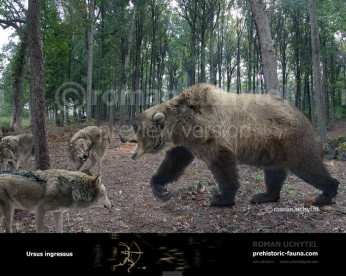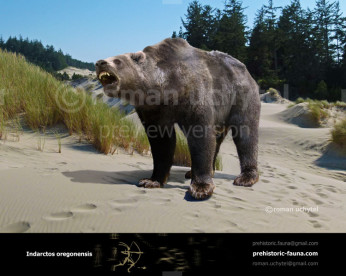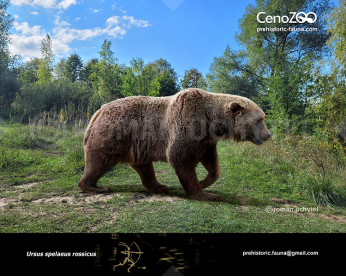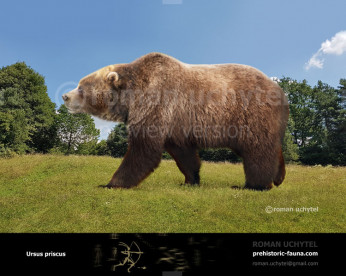Deninger's bear
263263Ursus deningeri (Ursus deningeri Richenau, 1904)
Order: Carnivora
Family: Ursidae
Dimensions: length - 2,5 m, height - 135 сm, weight - 150-600 kg
Temporal range: Pleistocene of Eurasia
Ursus deningeri (Deninger's bear) is an extinct species of mammal of the family Ursidae (bears), endemic to Eurasia during the Pleistocene for approximately 1.7 million years, from ~1.8 Mya to 100,000 years ago.The range of this bear has been found to encompass both Europe and Asia, demonstrating the ability of the species to adapt to many Pleistocene environments. U. deningeri is a descendant of U. savini and an ancestor of U. spelaeus.
Ursus deningeri has a combination of primitive and derived characters that distinguishes it from all other Pleistocene bears. Its mandible is slender like that of living brown bears and Ursus etruscus. It also has derived characters of cave bears (Ursus spelaeus) and is considered to be the descendant of Ursus savini and very close to the common ancestor of brown bears.
From Wikipedia, the free encyclopedia
Ursus deningeri (Ursus deningeri Richenau, 1904)
Order: Carnivora
Family: Ursidae
Dimensions: length - 2,5 m, height - 135 сm, weight - 150-600 kg
Temporal range: Pleistocene of Eurasia
Ursus deningeri (Deninger's bear) is an extinct species of mammal of the family Ursidae (bears), endemic to Eurasia during the Pleistocene for approximately 1.7 million years, from ~1.8 Mya to 100,000 years ago.The range of this bear has been found to encompass both Europe and Asia, demonstrating the ability of the species to adapt to many Pleistocene environments. U. deningeri is a descendant of U. savini and an ancestor of U. spelaeus.
Ursus deningeri has a combination of primitive and derived characters that distinguishes it from all other Pleistocene bears. Its mandible is slender like that of living brown bears and Ursus etruscus. It also has derived characters of cave bears (Ursus spelaeus) and is considered to be the descendant of Ursus savini and very close to the common ancestor of brown bears.
From Wikipedia, the free encyclopedia

-797x638.jpg)
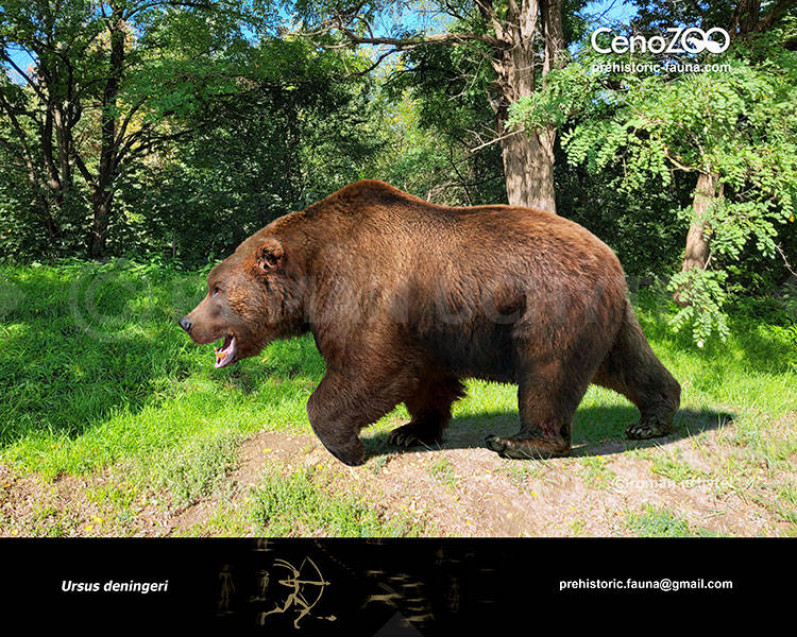
1-797x638.jpg)
-70x56.jpg)

1-70x56.jpg)
-346x277.jpg)
